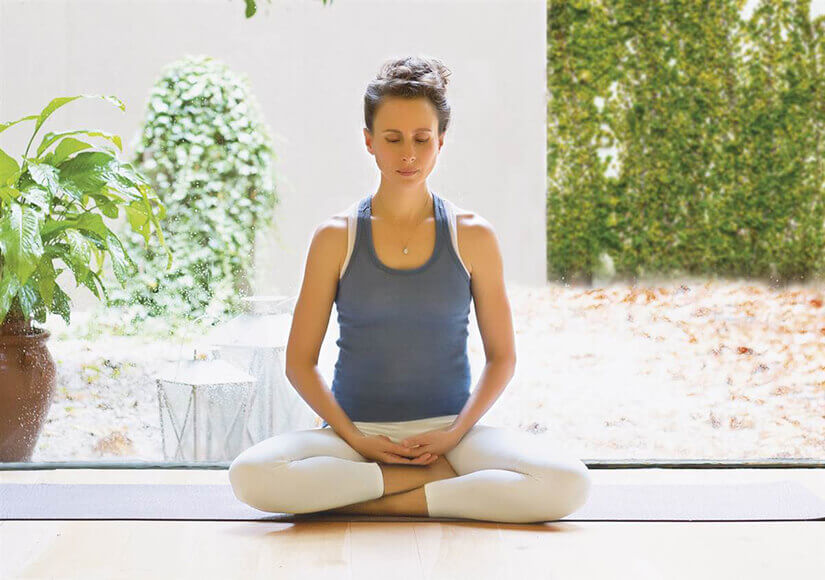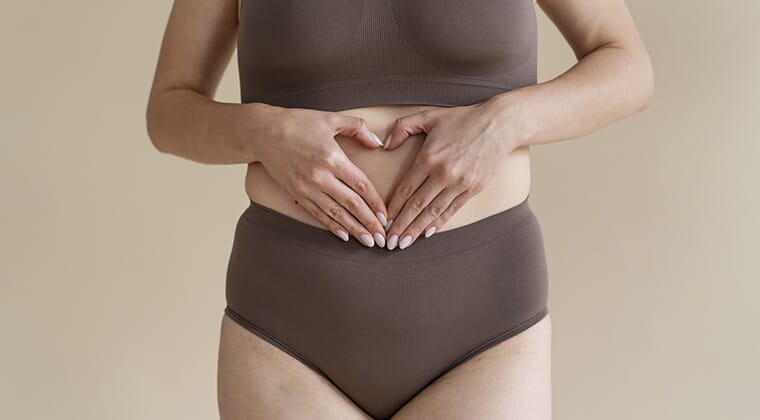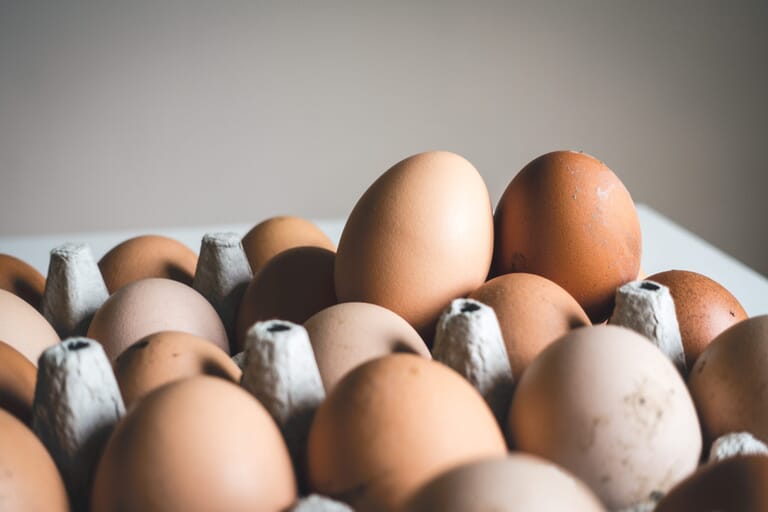Looking for some useful yoga poses for fertility? We’ve got you. In this blog we will show you 20 of the best ones. At Parla, we have previously written about yoga for stress relief, so if you want to learn more about it, you can check our blog on the benefits of yoga for mental health and pregnancy.
Does science support yoga for fertility?
We believe in the power of yoga and, as research has shown, this is a good way to boost your overall health. Indeed, a study by Alice Domar PhD of Harvard Medical School supports this.
In 2000 Dr Domar created a fertility program at the Benson-Henry Institute for Mind Body Medicine at Massachusetts General Hospital and then researched the women who participated, which was published in the study “Impact of group psychological interventions on pregnancy rates in infertile women”. She found that 55% of infertility patients became pregnant (and had a baby) within one year of participating in her 10-session program compared to a control group of 20%.
Now this is not a robust clinical study but this and many other studies certainly indicate a positive relationship between yoga and other mind-body activities and fertility health.
It’s also worth mentioning that Parla has a series of free, guided meditation podcasts designed especially for those trying for a baby. We invite you to check out our page about meditation for fertility.
Now let’s delve into fertility and what can yoga poses do for those planning to get pregnant.
The best yoga poses for fertility
Certain asanas or yoga postures relax the female reproductive organs, often by helping with better blood flow. The following yoga sequence will connect you with your most fertile energy.
There are plenty of yoga poses for fertility out there, from the most popular types of yoga. At Parla, we have selected 20 recommended ones for you. Ready to start?
Ocean breath (Ujjayi Pranayama)
 This position is important as a starting point to yoga poses for fertility so you can have a good practice.
This position is important as a starting point to yoga poses for fertility so you can have a good practice.
- Sit comfortably, watch your breathing, and slow it down: count 3-5 when inhaling, 3-5 when exhaling.
- Relax the diaphragm: the belly waves, the rib cage expands, the chest and shoulders relax.
- With your mouth open, begin to inhale and exhale with a whispering sound, as if you were cleaning some glasses with your breath. Then close your mouth and keep making that sound.
This breathing relaxes, helps you focus, and warms the body, which improves blood flow. Keep it throughout the session.
Cat pose (Marjaryasana)
 This position is performed alternating it with the cow pose (Bitilasana).
This position is performed alternating it with the cow pose (Bitilasana).
- As you exhale bring your navel towards the spinal column, curving it towards the sky.
- Drop your head and contract the pelvic floor.
- When inhaling, invert the curve as in the following picture (cow pose or Bitilasana).
- Repeat it 5 times.
This asana makes you relax and at the same time warms the spine, hips, belly, and shoulders. You should not contract the pelvic floor while you are on your period, ovulation, or if you are pregnant.
Cow pose (Bitilasana)
 In the cow pose, the back curve is reversed. This position is practiced in combination with the previous cat pose.
In the cow pose, the back curve is reversed. This position is practiced in combination with the previous cat pose.
Do not forget to repeat the cow movement until you complete it 5 times.
Downward-facing dog (Adho mukha svanasana)

- From the previous position, exhale and elevate the hips.
- Keep the weight on your heels, if necessary bending your knees a little bit.
- Open your hands and press gently on the floor with your yolks and palms to relieve the tension of the wrists.
- Do not let the chest fall so you can relax your neck and shoulders, related to the meridians of abdomen and uterus. Also relax your head and do at least 5 deep ujjayi breaths.
In this position, the sides are stretched and the front body, arms, hands and shoulders are strengthened. In addition, with a slight inversion, the parasympathetic relaxation response is triggered and the hormonal system is regulated.
Crescent Moon (Anjaneyasana)

- From the downward-facing dog, inhale and move forward your right leg as shown in the image.
- The back knee falls to the ground.
- While inhaling bring your arms to the vertical; If the shoulders are stressed, place your hands on the floor.
- Keep the navel inward.
- After 5 breaths, change to the other leg.
In this asana, the hip flexors, quadriceps, and lower abdomen stretch, increasing blood flow to the reproductive organs.
Child’s Pose (Balasana)

- Sit on your heels
- Separating the knees, bring the forehead to the ground and stay there between 5 and 10 breaths.
This posture relaxes the posterior body and induces relaxation.
Warrior II (Virabhadrasana II)

- While inhaling, take a step forward and flex the leg, aligning the knee with the foot.
- Open the body to the side and look at the front hand for five breaths.
- Change sides.
With this asana, you will open and strengthen the hips and sides. This is one of the most popular and recommended yoga poses for fertility.
Extended triangle pose (Utthita Trikonasana)

- From the warrior II pose, inhale and straighten the leg.
- As you exhale, bend the trunk and raise the opposite arm.
- The lower hand can rest on the leg.
- Look up, without forcing the neck, and after 5 breaths, change sides.
This asana tones up and opens the body in general, stretches the sides, and improves digestion and menstrual problems.
Wide-legged standing forward bend (Prasarita Padottanasana)

- Separate your legs firmly, with your feet parallel and your hands on your hips.
- Slowly lower the trunk while you exhale.
- Direct the crown of the head to the ground and rest your hands.
- Stay in this position, with a firm abdomen and the kneecaps raised, for 5 breaths.
This asana serves to relax and release the inside of the legs, which brings energy and blood to the reproductive organs.
Tree (Vriksasana)

- While standing up, inhale and shift your weight to your left leg.
- Little by little, raise the right leg by opening the knee.
- Rest the foot on the thigh and, inhaling, raise the arms.
- Keep your gaze, neck, and shoulders relaxed in this position for 5 breaths and change sides.
This is a very well balanced posture ideal to help you be more focused and gain confidence.
Garland pose (Malasana)

- With your feet in parallel and separated, exhale and flex your knees as much as you can.
- You can place a rolled towel under your heels if you need it.
- Join the palms and open the thighs with the elbows while you carry the torso forward for five breaths.
This position opens the hips, groin, calves, and feet while releasing tension in the lower organs and lower back.
Cobra (Bhujangasana)

- Face down, put your hands on the floor under your shoulders and spread your legs slightly.
- Inhale and lift your head and chest as far as it is comfortable.
- Do not squeeze the buttocks but contract the navel.
- Breathe 5 times.
This position carries blood to the uterus and ovaries, but should be avoided if pregnancy is suspected.
Head-to-Knee (Janu Sirsasana)

- Sit with your legs straight and bend the right one as shown in the illustration.
- Inhale, hold on to your left foot and, exhaling, bend the trunk and let go of your head.
- After 5 breaths, change sides.
Here hips and back open and more blood reaches the lower organs.
Wide-angle seated forward bend (Upavistha Konasana)

- Sit with your legs apart, exhale, and bend forward.
- If possible, grab your feet with your hands; if not, take them forward as far as is comfortable.
- Rest your forehead on the floor, on your hands or a pillow and do 5 breaths.
This position opens the adductors and groin, which eliminates any constriction in the meridians that pass through this area to the reproductive organs.
If you need it, put a cushion under your buttocks.
Hero pose (Virasana)

- Sit on your knees between your heels or, if you cannot or have knee problems, on a cushion.
- With the coccyx well rooted, the spine straight and the chest elevated, inhale and raise the arms with the interlaced hands and the palms upwards.
- If the cervical muscles are tightened, keep your hands on the knees and look gently down.
- Breathe 5 times and rest.
- Then, in the same position, interlace the elbows and wrists as in the picture, without raising the shoulders.
- Do 3-5 breaths, reverse the arms, and repeat.
Both postures release tension in the pelvis and lumbar back, which releases tension in the lower organs.
These also improve blood circulation in general by aligning the sacrum and reducing neck and shoulder tension.
Half bridge pose (Setu Bandha Sarvangasana)

- Lie with your feet resting on the floor under your knees.
- Inhaling, lift the hips, directing the coccyx forward and upwards so you don’t compress the lumbar area. Keep the abdomen and pelvic floor engaged.
- If possible, hold your hands.
- Nail your heels on the floor and keep your legs parallel to stabilise the sacrum.
- Take 5 breaths.
This posture exerts a gentle pressure on the thyroid glands, which helps their function.
It also helps to strengthen and stabilize the sacrum. This is important, because instability here irritates and inflames the surrounding muscles.
Legs up the wall (Viparita Karani)

- With your buttocks against the wall, put a pillow or folded blankets under your hips to elevate the pelvis.
- Extend the legs upwards, supporting them on the wall, and relax the arms at the sides.
- Perform at least 10-15 slow breaths.
This position essentially regulates the endocrine and lymphatic systems in a gentle and restorative way. This pose should be avoided during your period.
Belly Twist (Jathara Parivartanasana)

- From the previous position, bend your knees and let them fall to the side.
- Rest the knees on a cushion if it feels very intense.
This is a soft and restorative posture.
Corpse pose (Savasana)

- Lie face up, with arms at your sides, palms up, and eyes closed.
- Put a cushion under your knees if your lumbar ankles bother you.
- Do not try to modify your breathing.
- Observe your thoughts and feelings without clinging to them.
This relaxation restores and is essential to integrate into the work done.
Meditation to conclude

- Sit comfortably as at the beginning of the practice, with your hands on top of each other below your navel.
- Fix your gaze softly on a low point placed in front of you.
- Relax the face, especially the jaw, as if you were smiling inside, and also the eyebrows, as if you could see through them.
- Watch your breathing for a while.
- Then look at the flow of your thoughts, as if they formed a river, without judging them. See how they move away.
Allow yourself to remain in the space that opens up between them, experiencing the true nature of existence, which is simply love.
To complete any yoga practice, like this one for fertility, practice a small meditation; it is a way to better collect the benefits and return to your daily routine more relaxed.
Once the body tension is released, it is all about letting go of the mental and emotional tension and connecting with the internal energy and the one that surrounds you.
Yoga to boost fertility
We are living in a fast-paced world today where you tend to live to work instead of work to live. We often neglect not only the enjoyment of the here and now, but, more and more, we neglect our health.
There is a growing number of people in the prime of their fertile years experiencing difficulties conceiving. More and more women are also delaying trying to conceive due to various reasons such as pursuing their career. Yoga won’t change all that but certainly can help ease stress at whatever stage of your fertility journey you’re at.
Trying for a baby offers an opportunity to rethink concretely on how many levels the status of our health can be measured on the inside and out. At the very least its a time to try new things, such as yoga or meditation, to figure out what works for you to improve you’re health and find the right balance for your fertility health.
Sub-fertility, an opportunity to introduce changes
Before resorting to medical fertility treatments, there are habit changes that have proven to be very effective, even in the last stage of the reproductive years. You can read more on our blog “What is a healthy lifestyle?”.
This is true for women… and for men, because male fertility also decreases after 40. You can learn more by reading about the top causes of male infertility.
Let’s see what aspects should be taken care of especially.
Healthy diet
The first recommendation would be to eat in the cleanest, freshest, and most ecological way possible.
From the scientific aspect, you can read our blog post on nutrition like the “Fertility diet plan” where we will name fertility boosting foods. You can also check the one on folic acid or the recommended vitamins for fertility.
Acupuncture and massage
This should be done in the hands of fertility specialists or professionals with knowledge in hormonal and glandular health. To learn more about acupuncture, you can read our blog ”Acupuncture points for fertility”.
Reduce stress
Countless studies, such as Dr. Domar’s mentioned above, have shown the linkage between stress and fertility health. We have already written about this in the post “Fertility and mental health”. Yoga and mindfulness meditation is another area to explore that can be effective too.
Purify the body
In addition to the nutrition guidelines mentioned above its also really important to stay hydrated. This is often something we tend to overlook in our busy lives. It is advisable to drink plenty of water to ensure you are properly hydrated in order to help your body flush out any toxins and maintain a healthy digestion and overall diet.
Connect with nature in a less toxic environment
Performing daily walks in green areas of clean air allows you to connect with the rejuvenating energy of nature and increase blood flow and oxygenation.
It is advisable to opt for ecological cleaning and hygiene products, as well as to reduce the exposure to the electromagnetic waves of Wifis, mobile devices, and appliances.
In addition, it is worth observing how the people and situations that surround us affect us. This stress is as harmful as any other.
How yoga poses for fertility increase your chances of conceiving

This article focuses on key yoga and breathing techniques and postures that seek, among other things, to increase overall blood flow. Yoga is still heavily debated and naming it as a magic solution for fertility is something not many doctors would say. However, studies have proven that yoga is an effective way to reduce stress and the link between mental and fertility health has also been well documented.
Improve ovarian health
In particular, the postures are also designed to increase blood flow to the reproductive organs and the hormonal glands.
With many of them, in addition, the tension in the abdominal area is reduced, which allows the blood to reach these areas better. On the other hand, it helps to regulate the normal functioning of the hormonal and endocrine systems, which aids your overall health in many ways.
The effect of a more conscious breath
Breathing is the basis of practice and it is helpful to be aware of it.This simple gesture of paying attention to breathing leads to a more relaxed and focused state close to the state of mindfulness, which helps to reduce everyday stress and enjoy the present.
Greater flow of energy
The postures, known as asanas require you to exert energy and get the body moving. They teach to connect with various parts of the body that are essential in fertility health.
Physical yoga practice provides not only the benefits of each position but a greater flow of energy through the meridians, nadis, or energetic lines. Do not forget that asana in Sanskrit means “sitting down” so it’s important to remember not to over exert yourself as well. You should be comfortable in poses and stable with a deep and calm breath.
A sequence of yoga poses that enhance fertility
The yoga poses for fertility of this article are offered in a specific order, in a sequence, with the optimal contraposition to create a balance between prana and apana, two types of energy, 2 types of the five Vayus.
The practice ends with a meditation in which, after releasing body tension, the mental and emotional tension is released. It is the perfect opportunity to return to oneself and calm the mind.
You can practice this sequence during the whole cycle, except, in general, during your period. So, avoid these asanas in menstruation, because it is a time in which the body needs a special rest.
Beyond the yoga poses for fertility
Meditation is great for switching off from the hustle and bustle of life and re-centering yourself after a hectic day. It can also be useful when you are trying to conceive. Yoga helps you also calm the mind and get the body moving in ways that can aid the health of key organs involved in fertility health. However, it is also important to seek the advice from fertility and general medical experts.
As mentioned at the start of the blog, Parla has a series of free podcasts with meditation coach Clare Connelly, designed especially for those trying to conceive.
Parla is a digital community that helps women take a more proactive approach to their fertility. Membership is free and by joining you can access a whole host of content on subjects such as nutrition, contraception, female hormones and fertility, so you can feel empowered in your preconception planning.
Through the platform you can also ask chat with health experts in the community to get answers to your questions. Our community is growing fast, which just shows how many women want to feel more in control of their fertility.





